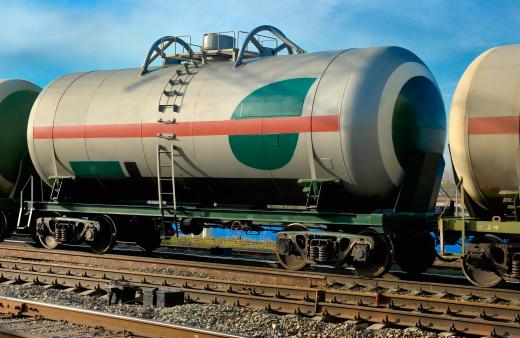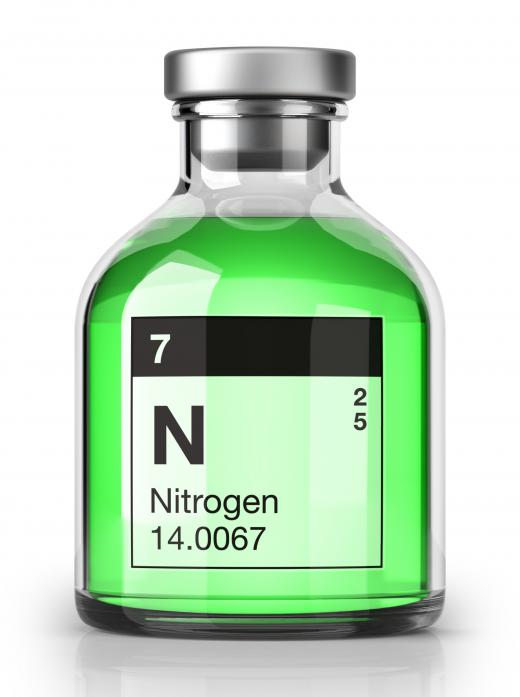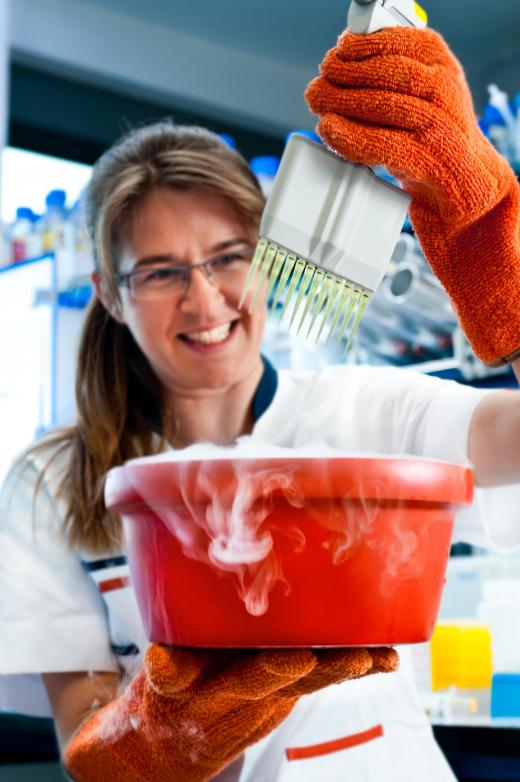What is Cryogenics?
 Mary McMahon
Mary McMahon
Cryogenics is the study of the production of extremely cold temperatures. This field of science also looks at what happens to a wide variety of materials from metals to gases when they are exposed to these temperatures. Cryogenics has a wide number of potential and actual applications, ranging from tempering metals so that they will be more durable to improving the tone of musical instruments. There are a number of research opportunities in this field of science, for people who are interested in the study of very low temperatures.
Etymologically speaking, cryogenics is literally the study of “things that produce incredibly cold temperatures.” There are a number of branches of this field, including the study of the impact of freezing on electrical components, and the study of the effect that deep freezing has on biological material like animals or plants. Some scientists focus purely on finding new ways to produce and maintain extremely cold temperatures, allowing others to build on their work in various offshoots of this field of study.

The temperature ranges used in cryogenics vary. Many people consider the study of any temperatures below -190 degrees Fahrenheit (-123 degrees Celsius) to be cryogenics. These temperatures are well below the freezing point, and they can have a dramatic impact on materials introduced to these very cold environments. There are a number of ways to produce temperatures this cold, ranging from specialized deep freezers to the use of liquefied gases like nitrogen which will control temperatures under the right pressure conditions.

When metals are frozen cryogenically, the strength of their molecular structure can increase, causing the metal itself to be stronger and more durable. Many high-end metal products may be subjected to cryogenics as part of the tempering process. The process is also used in the preparation of specialized medications, and in preservation of a wide range of materials. Cryogenic fuels are also popular for rockets and shuttles.

One branch of cryogenic preservation known as cryonics pops up in the news periodically. Humans and other animals can be deep frozen under controlled conditions in the hopes that medical advances will allow them to be resuscitated at some point in the future. Cryonics facilities often charge a hefty fee for their services, and the actual possibility of resuscitation after cryogenic freezing is a topic of debate in the scientific and medical community.
AS FEATURED ON:
AS FEATURED ON:














Discuss this Article
Post your comments